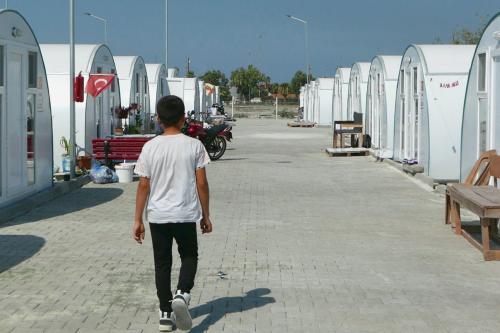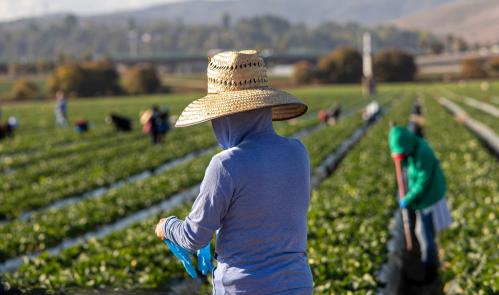With the number of Ukrainian refugees reaching over 5.6 million people at the time these lines are being written, this is a crisis that deserves smart long-term policy design to help both the refugees and their receiving communities.
In many cases, the conventional wisdom dictates that recent refugee arrivals, such as Ukrainians in Poland or Moldova, will go back to their home countries sooner rather than later. While this is certainly the hope, the reality is that in many cases refugees tend to settle outside their home countries for long periods, if not entire lifetimes. Syrian refugees started fleeing in 2011, and over 10 years later, they still constitute one of the largest refugee groups on earth. Venezuelan refugees, who started fleeing in masses after 2014, are still growing in number.
Thus, the perception that refugees will remain for a short period is often what drives policies that could be, in fact, counterproductive. An example is Syrian refugees in Turkey, who arrived starting in 2011. At first, the policy denied their right to work, perhaps driven by the perception that Syrians would go back to Syria soon enough, alongside the misperception that their participation in labor markets would be detrimental to the labor outcomes of locals. A few years later, in 2016—when it was clear that Syrians were not going back anytime soon—the Turkish government started giving its Syrian refugee population work permits. Previously, the millions of Syrians living in Turkey had no choice but not to work or to work in informal labor markets.
Another example is Venezuelan refugees in Colombia. Colombians showed a desire to design policy right from the beginning of the flow. Early on, Colombia gave Venezuelans the Special Stay Permit (or PEP, its acronym in Spanish), a special visa that gave Venezuelans full access to labor markets alongside access to health and educational public services. However, the PEP was notorious for its short duration of only two years (though, de facto, renewable). Anecdotally, Venezuelans struggled to get jobs with the document, often because firms did not know about it and in many cases the two-year horizon was too short for firms to hire an employee. However, Colombia—having learned this lesson—is now implementing a 10-year protection status to all the Venezuelans in the country that will replace the PEP.
Thus, countries receiving Ukrainians today should not be guided by the possibility that their stay will be temporary, and instead provide a regular migratory status that is not short-lived.
It is crucial to have policies in place to provide refugees with full access to labor markets and full freedom of movement. In reality, we all know that keeping people from working in the formal sector forces them to work in the informal sector (which is often large in developing countries). This is a lose-lose proposition, as informal sector workers usually get paid lower wages and do not pay income taxes. None of these are preferred outcomes for a government. Moreover, having the right to work in many cases is not enough. Finding a job is hard for everyone, let alone for people who just arrived in a new country, often without knowing the language and without large enough networks to facilitate the job-matching process. Therefore, putting forward policies that help the matching between employees and employers (many of which I discussed here) could be of great help.
Finally, it is crucial to devote the (limited) funding not only toward very much needed humanitarian assistance, but also toward investments in integration efforts. Funding, whether it comes from the international community (as it should) or from public funds, can be a game changer for integration when properly invested in hosting communities. Why? Because hosting communities—in response to the increase in their population—will need to expand their infrastructure, such as schools, hospitals, roads, telecommunications, and more. These investments in public goods improve overall productivity of local workers and firms. Importantly, funding should also flow in the form of credits to the private sector so that firms can expand appropriately and thus hire more workers. A great example is the 2018 program by the Colombian government to provide credit lines worth $30 million—as part of a larger investment package worth over $200 million—through the national development bank, Bancoldex, to finance capital investments to the private sector in areas with significant inflows of Venezuelan migrants. Using the most basic economic model—the same one some people use to explain why wages should go down when immigrants arrive—a proportional increase in investment (increasing the capital stock) would offset any negative impact of migration on wages. In practice, it will allow local firms to adapt to higher demand, hire more workers, and even take advantage of the skills of the newcomers.
Ukrainian refugees can tremendously contribute to the countries that are welcoming them, but this requires the right policies to be in place. To do that, it is important to look at the evidence and not be misled by misperceptions, as well as learning from the experiences of other countries. Only this can convert a challenge into an opportunity.






Commentary
What can policymakers in countries receiving Ukrainian refugees learn from other countries’ experiences?
July 18, 2022